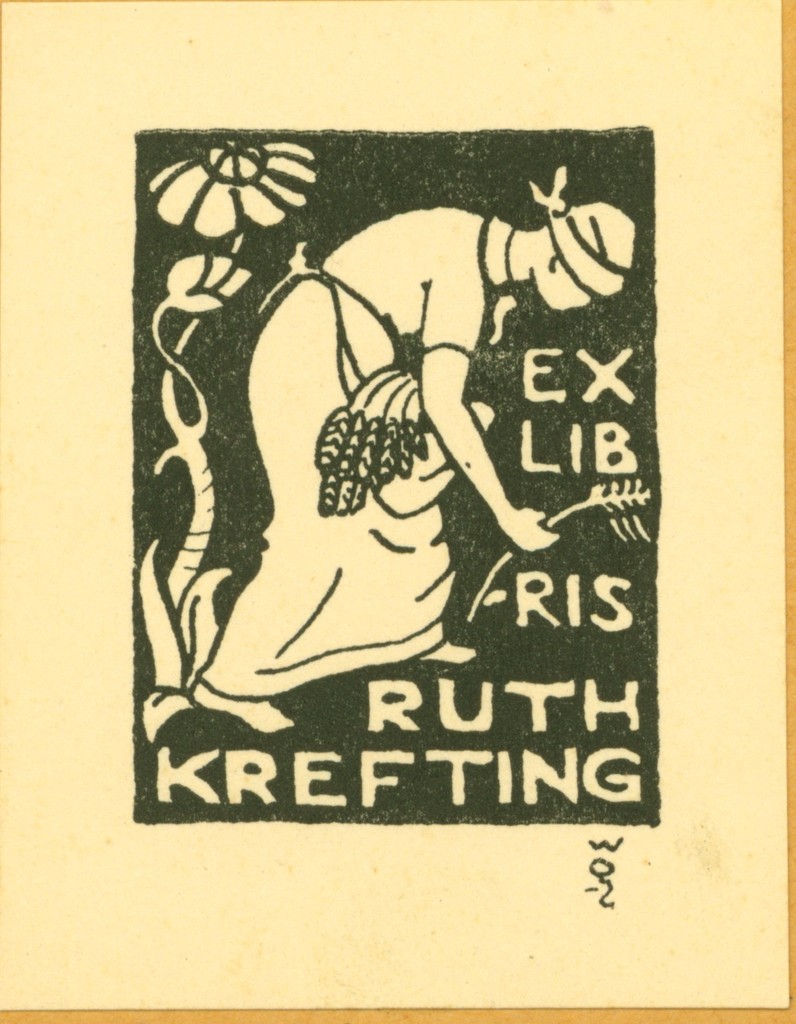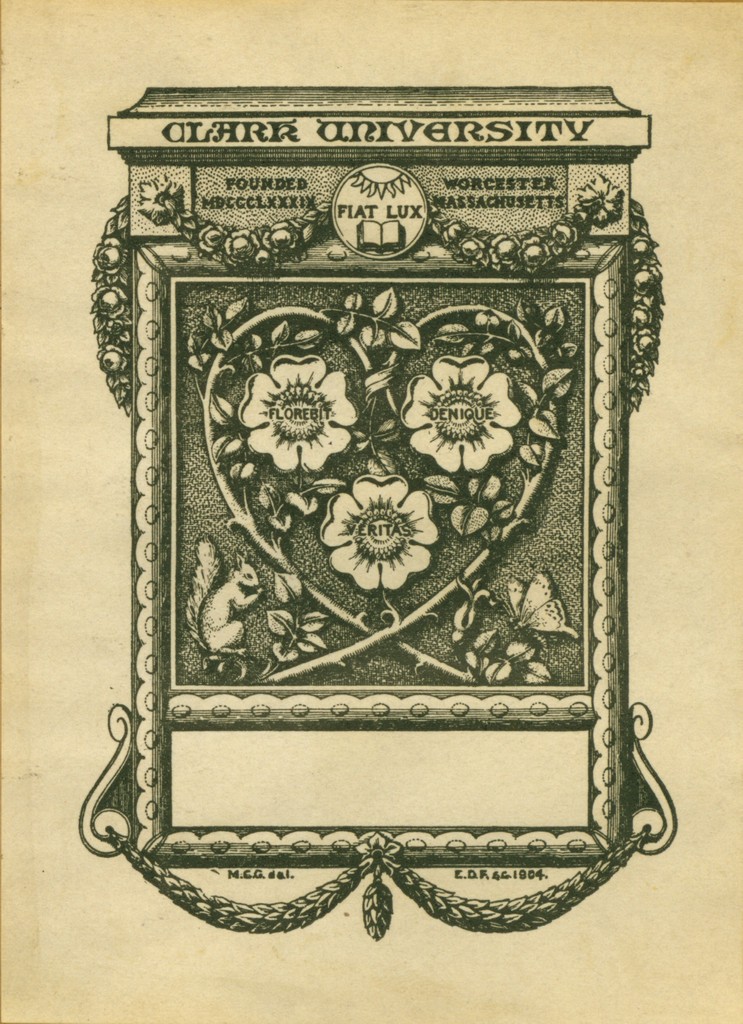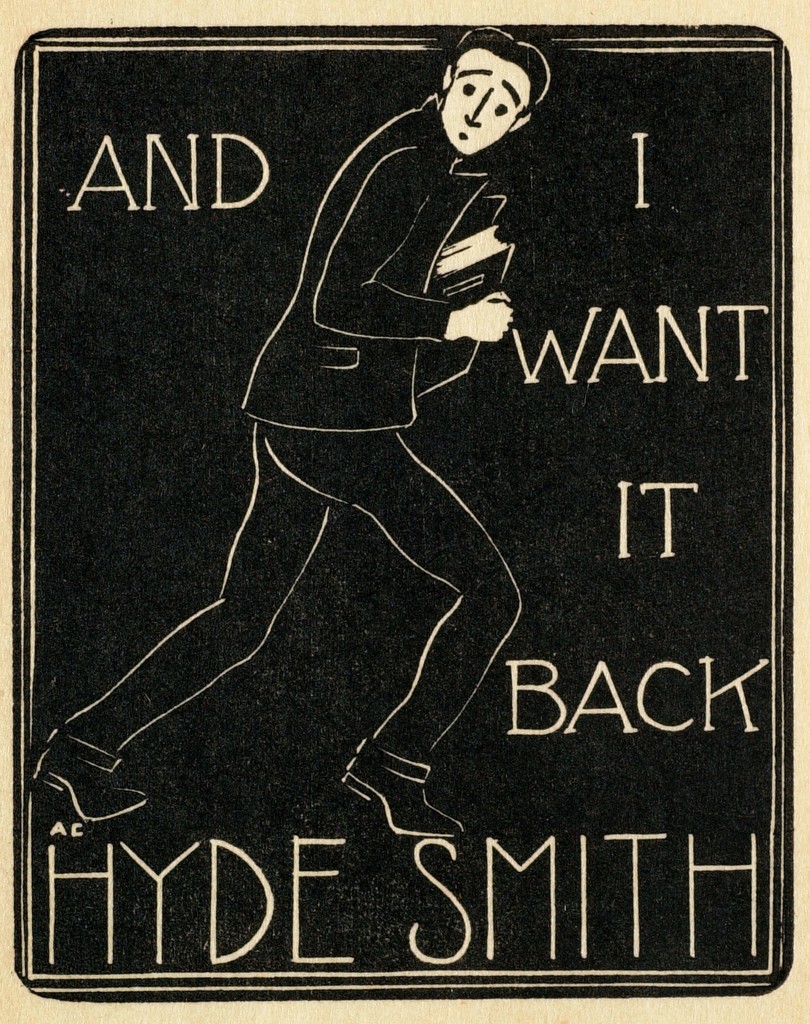


What is a Bookplate?
A bookplate is a stamp or engraving used to show ownership of a book
What is their purpose?
It is the original form of “This book belongs to:” and was used to prevent accidental book theft.
Everyone has lent out a book and never gotten it back. Having proof of ownership in the book made this less likely to happen.
They were also used as an art form to express personal interests. the design varied. The design varied depending on what the owner liked.
When were they first created?
Bookplates were invented in the 15th century.The earliest example comes from Germany. American examples started in the late 18th century.
Similarly, the Chinese have used personal chops, or stamps, since the Warring States Period (475-221 B.C.)
When were they most popular?
Bookplates fell out of popularity by 90% in the 1950s because paperback books became popular after the war. No one saw the need to put a bookplate in a paperback because they didn't expect the book to be returned. Also, TV became a big deal, so the level of reading dropped considerably. -James Good (Former Curator of the Smithsonian Institution).
Bookplates were most popular from the end of the 1800s to the early 1900s. This was due to Middle Class rising and taking an interest in bookplates. They were used as a sign of class.
A little bit of history...
Origin:
Everyone has had the experience of lending something out only to never get it back. This was true in ancient times as well as modern. In the 15th Century, the popular item to lend was books. In 1454, Johannes Gutenberg’s printing press began commercial printings of indulgences for the Catholic Church. Shortly after, printing presses popped up all over Europe. Books were easier to afford for the general public. By 1480, the first bookplate appeared in Germany. The owner was a priest named Hilprand Brandenbur, who likely was proud of his collection and wanted his book returned when lent out.
A bookplate is a stamp or engraving used to show ownership of a book. It is the original form of “This book belongs to:” and was used to prevent accidental book theft. Everyone has lent out a book and never gotten it back. Having proof of ownership in the book made this less likely to happen. They were also used as an art form to express personal interests. Depending on what the individual’s hobbies were, the design varied. American examples started in the late 18th Century. Paul Revere’s bookplate shows how personal interests influenced his bookplate.
Famous for announcing that the British were coming and thereby warning the revolutionaries, Paul Revere’s bookplate reflects his loyalty to the Colonies. The Latin phrase found on the shield is “Pugna pro Patria.” In English it means “Fight for one’s country.”
Differing Designs Throughout the Years:
Bookplates were most popular from the end of the 1800s to the early 1900s. This was due to Middle Class rising and taking an interest in bookplates. They were used as a sign of class. The design styles changed similar to fashions taking place in the country of origin. Baroque furniture and bookplates would easily be identified as coming from the same era.
As a similar item, the Chinese have used personal chops, or stamps, since the Warring States Period (475-221 B.C.)
Tudoresque (Late 16th Century): Usually larger designs that focus around a coat of arms.
Carolian (Mid 17th Century): Differing shield shapes surrounded by ribbons or wreathes.
Early Armorial (1695-1720): A plain shield in the vague shape of a square. A knight’s helmet sits on top and the entire design is framed by leaves. The shield typically bore the owner’s coat of arms.
Jacobean (Early 18th Century): Looks like late 17th Century woodwork. The basic shield shape is still visible, but the surrounding leaves look as if they are carved out of wood. Scallop shapes were also popular.
Chippendale (1740-1780): The shield can be found at an angle. The edges are elaborately decorated, and it no longer needs to be symmetric.
Spade Shield (1770- 1810): Gets its name from the specific shape of the shield. It has the shape of a spade.
Wreath and Ribbon, or Festoon (Late 18th Century): A shield with a ribbon around it.
Die Sinker (Early 19th Century: Square shaped with a picturesque landscape behind the shield. Made it easier to mass produce due to the simpler design.
Bookpile (Late 17th Century): Books stacked around a rectangle containing the owner’s name.
Library Interior (Mid 18th Century): Looks like the inside of a library.
Trophy (18th Century): A trophy with the name of the person.
Cipher (18th Century): This is similar to a monogrammed initial today.
The Fall of Bookplates
Bookplates fell out of popularity by 90% in the 1950s due to paperback books becoming popular after the war. No one saw the need to put a bookplate in a paperback because they didn't expect the book to be returned. Watching T.V. also became a new trend, so the level of reading dropped considerably.
Luckily, bookplates can still be found in books around the world. Studying them teaches us a lot about what was important to the original owner. Through them we can find out if the individual liked history, or science. It is a way to feel connected to the past.
External Links:
More information about bookplates:
More information about Chinese Chops or Seals:
.


